Dog Sports
Select a Dog Sport below
Agility is the country's fastest growing dog sport.
Designed as an obstacle race, an agility run is based on the dog and handler's ability to communicate effectively at distance over and through a variety of obstacles in a given sequence which can vary with each run. The ability of the dog to master the obstacles and handler directives while balancing speed and accuracy is the hallmark of a fantastic agility run.
The handler can utilize many different methods of communicating with their dogs including verbal commands, body motion, body position and "body pressure" to assist the dog through the agility course. Because the end goal is the fastest time, accuracy and speed are paramount. Hence, the dog's ability to excel in accurate jumping, obstacle negotiation and response to any and all cues is paramount to achieving the teamwork and clear-headed focus required to perform any Agility run at the highest level.
Agility classes are based on dog height and experience levels and dogs within the categories can consist of multiple breeds and temperament types. The height categories are largely in place for the purpose of adjusting jump height as many of the other obstacles are static in size.
Contact Obstacles:
Two broad ramps, usually about 3 feet (0.91 m) wide by 8 to 9 feet (2.7 m) long, hinged together and raised so that the hinged connection is between five and six-and-a-quarter feet above the ground (depending on the organization), roughly forming an A shape. The bottom 36 to 42 inches (0.91 to 1.1 m) of both sides of the A-frame are painted a bright color, usually yellow, forming the contact zone, onto which the dog must place at least one paw while ascending and descending. Many sanctioning organizations require that A-frames have low profile, narrow, horizontal slats all along their length to assist the dog's grip going up and down; other organizations prohibit slats; and many organizations now allow or require a rubberized surface. Some organizations allow the top of the A-frame to be narrower than the bottom.
DogwalkThree 8 to 12 ft (2.4 to 3.7 m) planks, 9 to 12 inches (23 to 30 cm) wide, connected at the ends. The centre plank is raised to about 4 feet (1.2 m) above the ground, so that the two end planks form ramps leading up to and down from the center plank. This obstacle also has contact zones. Many sanctioning organizations require that dogwalks have low profile, narrow, horizontal slats all along their length to assist the dog's grip going up and down; other organizations prohibit slats; and many organizations now allow or require a rubberized surface.
Teeter-totter (or Seesaw)A 10-to-12-foot (3.0 to 3.7 m) plank pivoting on a fulcrum, much like a child's seesaw. It is constructed slightly off-balance so that the same end always returns to the ground. This is done either by placing the support slightly off-center or else weighting one end of the board. This obstacle also has contact zones. However, unlike the other contact obstacles, the teeter-totter does not have slats. Many organizations now allow or require a rubberized surface. The balance point and the weight of the plank must be such that even a tiny dog, can cause the high end of the teeter-totter to descend to the ground within a reasonable amount of time, specified by the sanctioning organization's rules (usually about 2 seconds). Smaller dogs get more time to run a course, and this is one reason why it can take them longer than it takes larger dogs.
Tunnels:
A vinyl tube, 10 to 20 feet (3.0 to 6.1 m) long and about 2 feet (61 cm) in diameter, through which the dog runs. The tunnel is constructed of flexible vinyl and wire, such that it can be configured in a straight line, or in a variety of curves.
Collapsed Tunnel (or chute, or cloth tunnel)A barrel-like cylinder with a tube of fabric attached around one end. The fabric extends about 8 to 12 feet (2.4 to 3.7 m) and lies closed until the dog runs into the open end of the chute and pushes his way out through the fabric tube.
Jumps:
Two uprights supporting a horizontal bar over which the dog jumps. The height is adjusted for dogs of different heights. The uprights can be simple stanchions or can have wings of various shapes, sizes, and colors.
Double and Triple jump (or spread jumps, winged or wingless)Two uprights supporting two or three horizontal bars spread forward or back from each other. The double can have parallel or ascending horizontal bars; the triple always has ascending bars. The spread between the horizontal bars is sometimes adjusted based on the height of the dog.
Panel jump (winged or wingless)Instead of horizontal bars, the jump is a solid panel from the ground up to the jump height, constructed of several short panels that can be removed to adjust the height for different dog heights.
Broad jump (or long jump)A set of four or five slightly raised platforms that form a broad area over which the dog must jump without setting their feet on any of the platforms. The length of the jump is adjusted for the dog's height.
Tire jumpA torus shape roughly the size of a tire (18 inches (46 cm) to 24 inches (61 cm) inside diameter), suspended in a frame. The dog must jump through the opening of the "tire"; like other jumps, the height is adjusted for dogs of different sizes. The tire is usually wrapped with tape both for visibility and to cover any openings or uneven places in which the dog could catch. Many organizations now allow or require a so-called displaceable or breakaway tire, where the tire comes apart in some way if the dog hits it hard enough.
Miscellaneous:
An elevated square platform about 3-foot-by-3-foot (1-meter-by-1-meter) square onto which the dog must jump and pause, either sitting or in a down position, for a designated period of time which is counted out by the judge, usually about 5 seconds. The height ranges from about 8 to 30 inches (20 to 76 cm) depending on the dog's height and sponsoring organization.
Weave polesSimilar to a slalom, this is a series of 5 to 12 upright poles, each about 3 feet (0.91 m) tall and spaced about 24 inches (61 cm) apart (spacing for AKC was 21 inches (53 cm) until it was changed in January 2010. The extra three inches was to relieve stress on the dog's back.), through which the dog weaves. The dog must always enter with the first pole to his left, and must not skip poles. For many dogs, weave poles are one of the most difficult obstacles to master.
For more information on Agility, visit the links below:
United States Dog Agility Association
American Kennel Club Agility
Products
-
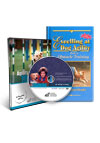 Obstacle Training DVD and Book Combo with Jane Simmons Moake
$75.90
$0.00
Obstacle Training DVD and Book Combo with Jane Simmons Moake
$75.90
$0.00
-
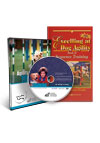 Sequence Training DVD and Book Combo with Jane Simmons Moake
$75.90
$0.00
Sequence Training DVD and Book Combo with Jane Simmons Moake
$75.90
$0.00
-
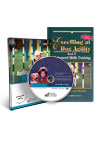 Advanced Skills Training DVD and Book Combo with Jane Simmons Moake
$75.90
$0.00
Advanced Skills Training DVD and Book Combo with Jane Simmons Moake
$75.90
$0.00
-
 Competitive Agility Series/Book Set with Jane Simmons Moake
$227.70
$0.00
Competitive Agility Series/Book Set with Jane Simmons Moake
$227.70
$0.00
-
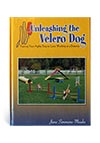 Unleashing the Velcro Dog- Training Your Agility Dog to Love Working at a Distance by Jane Simmons-Moake
$0.00
Unleashing the Velcro Dog- Training Your Agility Dog to Love Working at a Distance by Jane Simmons-Moake
$0.00
-
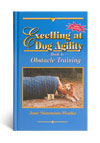 Excelling at Dog Agility Book 1 Obstacle Training by Jane Simmons Moake
$0.00
Excelling at Dog Agility Book 1 Obstacle Training by Jane Simmons Moake
$0.00
-
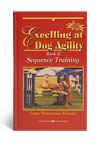 Excelling at Dog Agility Book 2 Sequence Training by Jane Simmons Moake
$0.00
Excelling at Dog Agility Book 2 Sequence Training by Jane Simmons Moake
$0.00
-
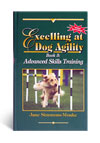 Excelling at Dog Agility Book 3 Advanced Skills Training by Jane Simmons-Moake
$0.00
Excelling at Dog Agility Book 3 Advanced Skills Training by Jane Simmons-Moake
$0.00
-
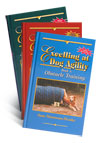 Excelling at Dog Agility 3 Book Set by Jane Simmons-Moake
$77.85
$0.00
Excelling at Dog Agility 3 Book Set by Jane Simmons-Moake
$77.85
$0.00
-
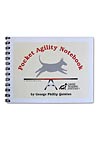 Pocket Agility
$6.95
Pocket Agility
$6.95
-
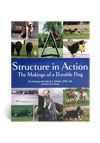 Structure in Action- The Making of a Durable Dog - A Book by Pat Hastings and Wendy E. Wallace, DVM cVA and Erin Anne Rouse
$29.95
Structure in Action- The Making of a Durable Dog - A Book by Pat Hastings and Wendy E. Wallace, DVM cVA and Erin Anne Rouse
$29.95
-
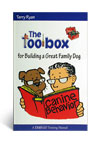 Terry Ryan's Toolbox for a Great Family Dog - A Book by Terry Ryan
$16.95
Terry Ryan's Toolbox for a Great Family Dog - A Book by Terry Ryan
$16.95
-
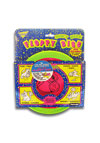 The Booda Soft Bite Floppy Disc
$0.00
The Booda Soft Bite Floppy Disc
$0.00
-
 K9 Superfuel Total K9 Performance
$0.00
K9 Superfuel Total K9 Performance
$0.00
-
 Competitive Agility Training with Jane Simmons-Moake 1- Obstacle Training Streaming
$39.95
$29.95
Competitive Agility Training with Jane Simmons-Moake 1- Obstacle Training Streaming
$39.95
$29.95
-
 Competitive Agility Training with Jane Simmons-Moake 1- Obstacle Training Streaming (German)
$39.95
$29.95
Competitive Agility Training with Jane Simmons-Moake 1- Obstacle Training Streaming (German)
$39.95
$29.95
-
 Competitive Agility Training with Jane Simmons Moake 2- Sequence Training Streaming
$39.95
$29.95
Competitive Agility Training with Jane Simmons Moake 2- Sequence Training Streaming
$39.95
$29.95
-
 Competitive Agility Training with Jane Simmons Moake 2- Sequence Training Streaming (German)
$39.95
$29.95
Competitive Agility Training with Jane Simmons Moake 2- Sequence Training Streaming (German)
$39.95
$29.95
-
 Competitive Agility Training 3- Advanced Skills Training Streaming
$39.95
$29.95
Competitive Agility Training 3- Advanced Skills Training Streaming
$39.95
$29.95
-
 Competitive Agility Training 3- Advanced Skills Training Streaming (German)
$39.95
$29.95
Competitive Agility Training 3- Advanced Skills Training Streaming (German)
$39.95
$29.95
-
 Competitive Agility Training with Jane Simmons-Moake Video Set Streaming (English)
$104.95
$79.85
Competitive Agility Training with Jane Simmons-Moake Video Set Streaming (English)
$104.95
$79.85
-
 Training Through Pictures with Dave Kroyer - Learning to Learn Streaming
$59.95
$34.95
Training Through Pictures with Dave Kroyer - Learning to Learn Streaming
$59.95
$34.95
-
 Training Through Pictures with Dave Kroyer Video 1 and 4 Set Streaming
$149.95
$119.90
Training Through Pictures with Dave Kroyer Video 1 and 4 Set Streaming
$149.95
$119.90
-
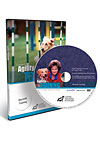 Competitive Agility Training with Jane Simmons-Moake DVD 1- Obstacle Training
$34.95
$29.95
Competitive Agility Training with Jane Simmons-Moake DVD 1- Obstacle Training
$34.95
$29.95
-
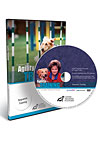 Competitive Agility Training with Jane Simmons Moake- DVD 2- Sequence Training
$34.95
$29.95
Competitive Agility Training with Jane Simmons Moake- DVD 2- Sequence Training
$34.95
$29.95
-
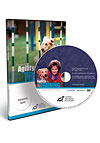 Competitive Agility Training DVD 3- Advanced Skills Training
$34.95
$29.95
Competitive Agility Training DVD 3- Advanced Skills Training
$34.95
$29.95
-
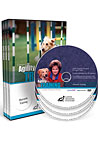 Competitive Agility Training with Jane Simmons-Moake DVD Set
$94.85
$79.85
Competitive Agility Training with Jane Simmons-Moake DVD Set
$94.85
$79.85
-
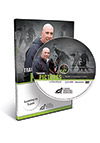 Training Through Pictures with Dave Kroyer- Learning to Learn DVD
$59.95
$34.95
Training Through Pictures with Dave Kroyer- Learning to Learn DVD
$59.95
$34.95
-
 Concepts in Reinforcement- Training with Food with Dave Kroyer DVD
$59.95
$34.95
Concepts in Reinforcement- Training with Food with Dave Kroyer DVD
$59.95
$34.95
-
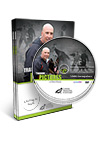 Training Through Pictures with Dave Kroyer Video 1 and 4 DVD Set
$119.90
$69.90
Training Through Pictures with Dave Kroyer Video 1 and 4 DVD Set
$119.90
$69.90




